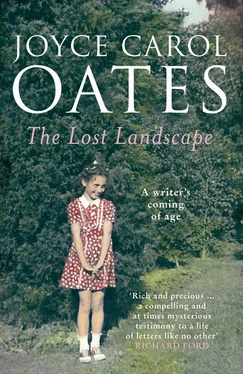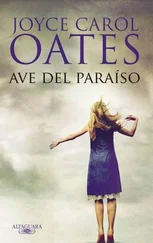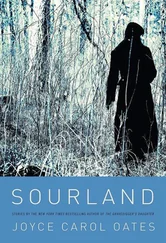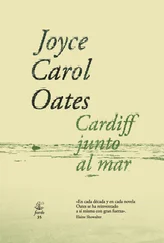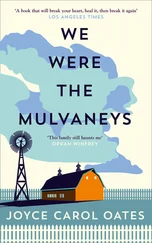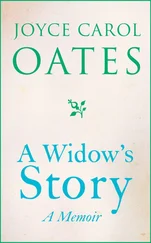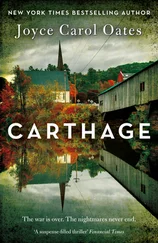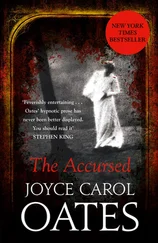FOR A LONG TIMEvacant and boarded up, District #7 school was finally razed in the late 1970s. And for a long time afterward, when I returned to Millersport to visit my parents, I would make a sentimental journey to the site, where a collapsed stone foundation and a mound of rubble were all that remained. Soon such one-room schoolhouses will be recalled, if at all, only in photographs: links with a mythopoetic “American frontier past” that, when it was lived, seemed to us, who lived it, simply life.
“DON’T BE AFRAID. DADDYis right here.”
Yet, Daddy was not visible to me, for Daddy was behind me. It did not seem natural to me that my father, who always drove our car from the position of authority behind the steering wheel, was seated behind me in the Piper Cub that was a beautiful bright yellow like a butterfly’s wings.
It was a summer day in the late 1940s. I would have been nine or ten years old. My young, adventurous father Fred Oates had earned a pilot’s license a few years before, and this was my first trip with him.
Daddy had not been drafted into the army as he’d feared. He had not served in World War II due to deferments he and his fellow workers at Harrison Radiator had been given, since they were involved in “defense manufacturing.” And now, after the war, planes belonging to the government had passed into private ownership, and men like my father began to take flying lessons.
How and why my father took flying lessons at Lee’s Airfield on Transit Road north of Buffalo, New York, I have no idea. There wasn’t much money in any household in which he’d ever lived. To help with expenses my father not only worked at Harrison’s but also painted signs for commercial businesses in the area. Yet somehow he’d been able to afford flying lessons as early as 1935 (when he was twenty-one) and had acquired a pilot’s license by 1937, the year before I was born, which enabled him to fly not only small planes like Piper Cubs, Cessnas, and Stinsons but also eventually the sporty Waco double-winged biplane, and even ex–Air Force trainers—a Fairchild with 175 horsepower, a Vultee basic trainer, 450-horsepower, with a canopied open cockpit that could fly at twelve thousand feet.
My first time in the Piper Cub would be one of the great memories of my life.
Initially, immediately, there was the strangeness of my father “dressing” me—(which he never did; only my mother dressed me)—as I was outfitted with goggles and a helmet, which were much too large for me. (My father wore a parachute, but I did not, which might have seemed ominoua if I had thought about it. But of course—I could not have used a parachute.) Next, I was half-lifted by Daddy into the single front seat of the plane, and buckled in; the door which seemed to be made of some metal much lighter than a car door was shut and secured. Next, the Piper Cub propeller was turned manually by a boy who worked at the airfield until it began to spin with a loud roar, and the motor kicked in. Next, I was being driven along the bumpy airstrip, past rows of larger planes, at an ever-accelerating speed, totally terrified, dry-mouthed and astonished as I stared through the windshield at a world that was rushing at me much too quickly, and without any adult to shield me from it as if I, and not my father behind me, were the pilot.
Suddenly then, and sickeningly, the quaking little plane was in the air—rising above a row of trees, and above open fields.
Like any ten-year-old I trusted my father, absolutely. As I trusted my mother. (And now I wonder what my young mother must have been thinking, watching us from the runway. Did she, too, have complete trust in my father? Was she frightened when he took her up into the air, and did she really want to accompany him?—or was she, perhaps subtly, coerced? Should my father, with his newly acquired pilot’s license, have taken up a ten-year-old child?) There was a daredevil recklessness to life in those days which seems in our more cautious era, in which children are likely to be over-protected by their parents, very remote indeed. Recall that this was a time when seat belts in vehicles were unknown and virtually everyone (including my parents) smoked.
Through his life my father would always say, “Flying is safer than driving a car.” Statistically, this is (evidently) true, yet not quite a consolation for some of us.
My most vivid memories of that first trip are the fields opening beneath the plane, the blur of the spinning propeller close in front of me, the buffeting rush of the wind, and the quaking of the plane. In small aircraft you are very conscious of the wind. You are very conscious of the sky. Below, every detail seems heightened. You have suddenly an entirely new, unexpected perspective—you are looking down, bizarrely, from above. It is something of a miracle to see the roofs of houses and barns not so very far below as you pass over.
Pilots of small planes invariably head for home to fly over their houses and property. My father never failed to do this, a quick trip of only a few minutes, since our farmhouse was no more than three miles away. What is more pleasurable than to “buzz” the houses of friends and relatives?
Such playfulness suggests the youth of my father at this time, as it suggests the youth of the era. “Buzzing” low over houses and property was viewed as a sort of practical joke and not a dangerous annoyance as we would be inclined to see it today.
In the Piper Cub my father was likely to fly us to Lockport, where we could see the Erie Barge Canal stretching out below; he was likely to fly us in the direction of Niagara Falls, and the Niagara River; we would never fail to see the Tonawanda Creek, that stretched past our house on Transit Road and would enter my dreams for a lifetime. All these waterways were fascinating to me like the wind-buffeted airborne perspective itself. Safety is a small price to pay for such a perspective! —so my father might have said.
To be in the air—airborne! There was nothing like it for my father and his pilot-friends.
Returning to the airfield: that thrill in the pit of the stomach as the Piper Cub circles the runway and begins to dip down. (Sometimes, if the plane isn’t in the ideal position, the pilot decides not to land. And so you sweep up again, rapidly up into the air again, the nose of the plane lifting into the sky so that for an unnerving moment there is nothing to see but sky.) Then, circling back, and trying again as the nose of the plane is lowered by a movement of the pilot’s stick.
Landing is the most dangerous maneuver. A mistake at that time can be fatal . . .
A reassuring jolt as the plane’s wheels strike the runway and within an instant the plane is on the ground, bouncing and bumping along the runway.
Returning to the hangar in a kind of triumph. And my mother hurrying forward to greet us with a tight embrace and a little sob of relief as if to say Thank God! You are returned to me safely.
IN SUBSEQUENT YEARS MYfather would take me up in some of the larger and more intimidating airplanes at Lee’s Airfield. There was at least one picture of Daddy and me in the Fairchild PT-19 with its cockpit open and both of us, in helmet and goggles, smiling and waving at the camera, presumably held by my mother—but this precious snapshot (for which I continue to search) seems to be permanently lost. It is embarrassing to recall that within a year or two of the first Piper Cub flight I had become so habituated to flying with my father, and so utterly trusting of him, that I dared to bring a tablet with me into which I scribbled “stories” while airborne . . .
(What was I always scribbling in those days? My mother would keep a selection of my school tablets that were filled with drawings of chickens and upright cats like human figures; I have seen these, but through a haze of embarrassment I lost a clear memory of them. There seemed to have been in my life as a writer a seamless transition from pre-literate activities of vigorous drawing in tablets with Crayolas to my first childish “stories” when I’d learned to write as adults write; from there, a seamless transition to my first typed stories when I was fourteen, and beyond.)
Читать дальше
